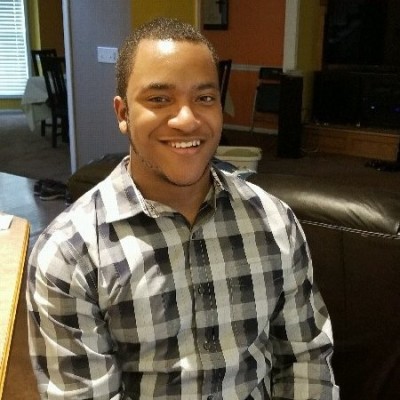Obsessive Compulsive and Related Disorders
(PS7-D75) Perceptions of the Voluntariness of Tics After Behavior Therapy for Tic Disorders

Brandon X. Pitts, B.S.
Clinical Psychology Ph.D. Student
Marquette University
Milwaukee, Wisconsin
Kathryn E. Barber, M.S. (she/her/hers)
Graduate Student
Marquette University
Milwaukee, Wisconsin.jpg)
Douglas W. Woods, Ph.D. (he/him/his)
Dean of the Graduate School
Marquette University
Milwaukee, Wisconsin
Author(s)
Tics are sudden, rapid, nonrhythmic movements or vocalizations that have both voluntary and involuntary aspects (Fründt et al., 2017). Patients with tic disorders (TD) typically perceive the premonitory urge that precedes tics as involuntary, while the actual movement or vocalization of the tic is viewed as a voluntary response to the urge (Cavanna & Nani, 2013). Comprehensive Behavioral Intervention for Tics (CBIT) is a behavior therapy protocol that teaches patients strategies to manage and control tics (Woods et al., 2008). Youth with TD described that gaining control over tics was an important outcome of behavior therapy (Cuenca et al., 2015). However, whether receiving CBIT has a long-term impact on how patients perceive the voluntariness of tics has yet to be examined.
Data were drawn from a long-term follow-up study of a randomized controlled trial (RCT) comparing CBIT to psychoeducation and supportive therapy (PST) (Piacentini et al., 2010). Of the original 126 participants, 80 individuals completed the long-term follow-up assessment (M follow-up duration = 11.2 years). As part of the follow-up, qualitative interview data was obtained from 55 participants (29.1% female; M age = 22.7), 23 of whom received CBIT and 32 of whom received PST. The interview included an open-ended question asking, "Do you think that tics are voluntary or involuntary?" Participant responses were recorded verbatim and then coded by two independent coders. Treatment response at the end of the RCT was determined by a Clinical Global Impression of Improvement score of “very much improved” or “much improved.” In the present sample, 18 patients were responders and 36 were non-responders.
Chi-square tests were conducted to examine differences in response to this question based on treatment group in the original RCT (CBIT vs. PST) and treatment response status (responder vs. non-responder). Across the entire sample, 72.7% of participants perceived tics as involuntary and 27.3% endorsed tics as at least partially voluntary. Of patients who received CBIT, 73.9% (n=17) endorsed tics as involuntary, compared to 71.9% (n=23) of patients who received PST. This group difference was not significant (X2 (1, 56) = 0.03, p = 0.867). We also explored whether responses differed based on treatment responder status at post-treatment. Most treatment responders (n=13; 72.2%) and non-responders (n=26; 72.2%) endorsed tics as involuntary (X2 (1, 54) = 0.00, p = 1.00).
Our results indicated that most patients viewed tics as involuntary. Comparisons between CBIT vs. PST and treatment responders vs. non-responders did not reveal significant differences between groups. These findings suggest that despite learning strategies to manage tics in CBIT, this treatment may not have a long-term impact on perceptions of the voluntariness of tics. This may be due to the involuntariness of the premonitory urges that precede tics. These findings have clinical implications, particularly regarding expectations for treatment. CBIT teaches strategies to manage tics and patients report having increased control over their tics after behavior therapy (Smith et al., 2016). However, our results suggest that treatment does not lead to long-term perceived volition of all aspects of tics.

